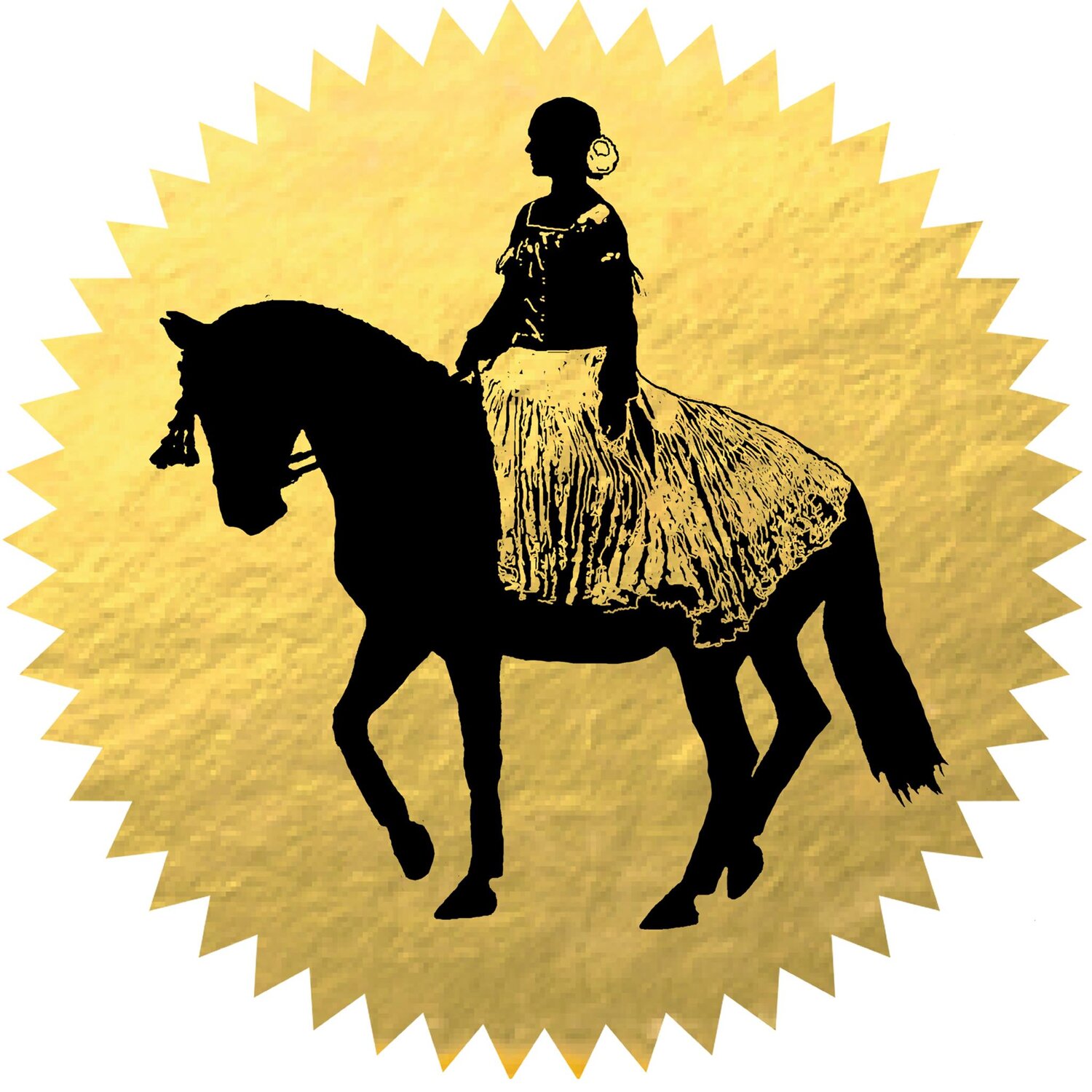Improve Your Dressage Position with Better Posture- 12 Tips & Exercises
/It is a beautiful to watch an elegant rider on a balanced horse. What is the key ingredient to creating that elegant picture? Great posture of course! There is an immediate, 100% improvement in the overall picture of you and your horse if you correct your alignment.
A slouched, hunched over, "sloppy" rider can transform into a tall, straight, elegant rider quickly with consistent practice. Some of the causes of incorrect alignment include: physical problems, tension, and lack of confidence.
My improved posture came from years of practice. At the Isaac Royal Academy of Equestrian Arts I spent the first 6 months of my training on a lunge line riding without stirrups and reins. My instructor, Carolyn Rose, had me continue to ride without stirrups for years to instill independent balance. I also love to dance and practice yoga so that helps me with core strength and being open in the shoulders and chest. Here are some exercises to try on and off your horse to help improve your posture.
Exercises to Practice Correct Posture On Your Horse:
- Ride with one hand held above your head. Place your reins in one hand and stretch your other hand high to the sky. This will lift and stretch your torso, helping you to stay balanced and straight. This is also an excellent exercise if you tend to drop one shoulder more then the other. Try it at the walk, trot, and canter if it's available to you.
- Start with warm-up exercises for your chest and shoulders. Try stretching your arms up high as you look up at the sky to open up your chest. While your horse is halted you can put one hand on the pommel and reach the other one back to the cantle to add a gentle twist with your upper body to help release tension in the back.
- Lift your chin like you're balancing something on your head. Looking down at your horse too much will cause you to tip forward and round the shoulders. By keeping your chin up, you cannot help but lift and open your chest. Remember to look between your horse's ears or even higher to help keep your chin level.
- Imagine that you are drinking tea! I really like this one because it also helps riders feel elegant and still in their upper body.
- Try to pinch your shoulder blades together. Imagine there is a pencil in that space and you're trying to crush it with your shoulder blades. This will help you to open your chest.
- Take a lunge lesson and hold the pommel with one or both hands. Use your hands pressing against the pommel to help you lift your chest.
- Place a whip behind your back and wrap your elbows around it. Do this in your warm-up at the walk on a safe horse. This may over-arch your back but it can help open your chest and shoulders if you are really rounded in your upper back.
Usually, a person with poor posture when they ride will also have poor posture on the ground (and vice versa). This may or may not be true for you, but try to imagine that you are a King or Queen when you're home, or wherever you are, and that is what you should feel like on the horse! Proud, confident, and strong!
“Noble and great. Courageous and determined. Faithful and fearless. That is who you are and who you have always been. And understanding it can change your life, because this knowledge carries a confidence that cannot be duplicated any other way.”
Exercises to Practice Correct Posture On the Ground:
- Take dance classes. There are so many to choose from! Try tango, ballet, belly dance (see video below), salsa, or ballroom!
- Practice yoga(check out THIS POST for yoga videos sorted by "target" areas of the body and choose a video by the amount of time you have to practice) or tai chi.
- Try a pilates or cross-fit class for core strength.
- Try sitting on an exercise ball while you are on the computer to help bring awareness to your seat and spine.
- Wear a shoulder brace that helps remind you to stay in correct posture. There are many different styles to choose from online.
Belly Dance Video To Help With Your Posture:
If you live near Dover-Foxcroft, ME you should check out the Color of Life Yoga Studio.
For yoga videos to improve your strength, flexibility, and balance (from the comfort of your own home!) and to target your "stuck" areas, CLICK HERE.
If you have any pain or discomfort in your back, neck, or shoulders, you should seek therapy to help correct the issue. I have been to many massage therapists, osteopathic doctors, and alternative physical therapists to keep my body in order so that I can ride to the best of my body's capability.
Regular exercise and stretching is important to prevent injury and increase flexibility, strength, and balance. To ride a horse is the ultimate form of dance, involving the body, mind, and spirit of both partners. So treat yourself like a professional dancer, because that is what you are!
“What does dance do for us? First and foremost, it inculcates the sense of rhythm and enhances our response to rhythm. This is really a response to life. It makes us more living, which is to say, more spiritual. It brings out beauty of form and movement, and envelops our personalities in the enjoyment of them. It takes us beyond ourselves, bringing an initial taste of the state of non-being, which is really a balm for the soul.”












